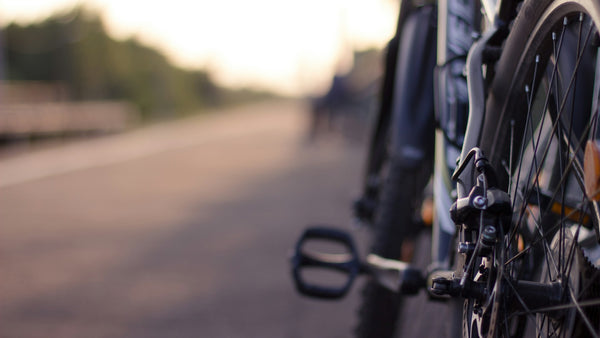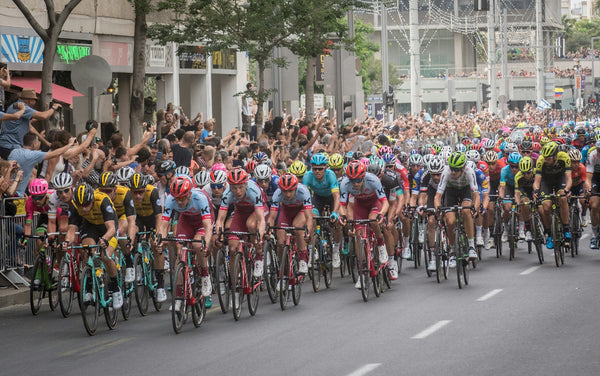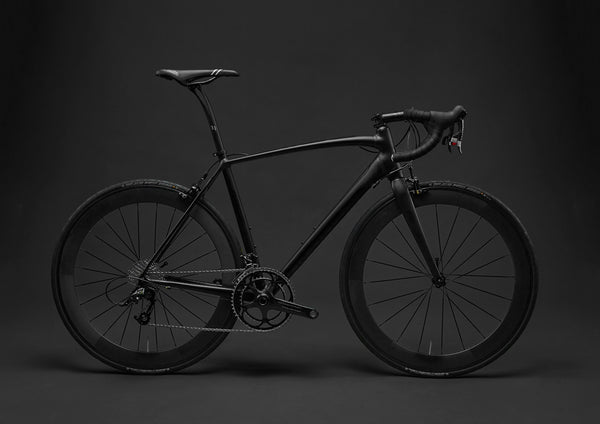Though only in its second year, the Tour de France Femmes avec Zwift seems like it has been on the schedule for many years. That’s partly because it’s not the first incarnation of a women’s Tour de France.
A brief history of the women’s Tour de France
For those of us old enough to remember, there was a very successful and compelling version of the women’s Tour de France in the mid-to-late 1980s and then again in the early 1990s to 2009. In those years, some of the strongest women riders such as Inga Thompson, Jeannie Longo, Maria Canins, and Marianne Martin would race on the same day over a shortened course compared to the men’s route. Inga Thompson famously said that the women would race all the hardest parts since the women’s route would just cut off the first 100 flat kilometers that the men did before hitting the mountains.
In any case, through lack of interest and funding from the organizer, and unenthusiastic media coverage, the women’s various versions of the Tour de France never reached the level of interest that the current Tour de France Femmes enjoys. Thanks to funding provided by one of cycling’s only unicorn companies, Zwift, the current version of the women’s Tour is professionally organized, well supported by fans and media alike, and has every intention of running for many years to come.

A race apart
The ASO’s first real stab at conducting a Tour de France for women came with the advent of La Course by Le Tour de France. It was a one day race (2017 had two stages) that ran from 2014 to 2021. It typically finished on the final day or final weekend of the men’s Tour de France. And though it was prominent and prestigious, it always felt a little half-hearted. It was as if the organizers were only putting it on as something to entertain the crowds while they waited for the men.
That all changed with the inauguration of the Tour de France Femmes avec Zwift in 2022. It still started on the final weekend of the men’s race, as it does again this year, but it continues for an entire week, racing over different routes compared to the ones used by the men, and featuring a lot of climbing, which La Course that finished for the first three years on the Champs-Élysées, was not always willing or able to do.
For the 2023 edition, the women will be starting in Clermont-Ferrand in central France, and tracing their way in the reverse direction that the men’s peloton has been racing, to reach Pau for the final individual time trial eight stages later.
What are the unmissable stages?
Since there are only eight stages for the Tour de France Femmes, all eight stages will be action-packed. Every stage will be a great way to avoid post-Tour withdrawal symptoms. Or at least delay their onset for another week.
The variety of the parcours will ensure that riders with a wide range of strengths will have the chance to shine: from sprinters to escape artists to pure climbers.
But if you have limited viewing time, there are certain stages that should define the race and who will win it.
Stage 1 Clermont-Ferrand to Clermont-Ferrand (123.8 km)
At just 124 km, the opening stage takes place in the hills in and around Clermont-Ferrand. The opening kilometers look like a nice way to open the legs up, but the roads in this part of France are typically very heavy, making you work super hard for every km/h. It’s a lumpy finish too that could squelch the hopes of any pure sprinter on the day. We wouldn’t be surprised to see Marianne Vos take one of her trademark crafty victories, and the first yellow jersey of this Tour.
Stage 2 Clermont-Ferrand to Mauriac (151.7 km)
Starting again in Clermont-Ferrand, stage 2 promises to be a much more difficult day with six categorized climbs, including a category 2 just over 100 km into the day. At 151 km, it is the second longest stage of the race. With so many Queen of the Mountain points to be snatched up, look for a very strong breakaway of climbers to get up the road. The final categorized climb up the Côte de Trébiac is a stiff cat 3, just 3.4 km long but at an average of 5.8% with some 9% pitches midway. It’s not the last climb of the day, though. There’s a short descent after the QOM point and then a sharp, short climb up to Mauriac. It’ll be the first stage that should give a hint about how the GC pecking order will shake out.
Stage 3 Collonges-la-Rouge to Montignac-Lascaux (147.2 km)
The ASO has this stage listed as flat, but with four category 4 climbs and tons of undulation, it’s the kind of stage that will feel flat only if you have really good legs. It is a flat run into Lascaux, so should offer a good day for the strongest sprinters, though only if the sprinters’ teams work together to bring back a break that will inevitably be full of strong riders. It’s one of those stages that can be among the most exciting if the teams mis-judge the break and have to write a new script.
Stage 4 Cahors to Rodez (177.1 km)
Is this another one for the break, or will it be the first time we really see the contenders for the general classification test their opponents? It’s anyone’s guess. But after the flat start, which will likely see a break full of a mix of riders from rouleurs to climbers, the second half of the stage is back-loaded with a lot of climbing, including two category 3s and a category 2. The sprint points are also quite deep into the stage and after a fair bit of climbing, so anyone targeting the green jersey will have to be on a good day as well. It’s the longest day of the Tour with heavy roads and even heavier climbing; it’s a day for the strongest to shine.
Stage 5 Onet-le-Château to Albi (126.1 km)
Another day categorized as flat, but that still has a fair bit of climbing. It should nevertheless end in a sprint, but expect the bunch to be reduced with only the strongest able to contest. No day is a day off for the GC, but this stage should come closest, provided there aren’t any crosswinds to complicate matters. The scenery will be amazing, so still well worth a look.
Stage 6 Albi to Blagnac (122.1 km)
Any pure sprinters who missed out yesterday should find today much more to their liking. There are four cat 4 climbs, so if anyone is trying to hang onto the polka dot jersey as Queen of the Mountains for another day, it’ll be important to integrate into the break.
Stage 7 Lannemezan to Col du Tourmalet (89.8 km)
This is the stage we’ve all been waiting for. Second shortest of the race, but by far the most difficult and the one that all the riders will have been basing their training around since the route was announced. It’s important to remember that for the current generation of riders, races seldom ventured into these types of high mountains. It’s only in the past four or five years that women pros have been faced with these monster climbs. The first few years only one or two riders were prepared for the challenge. This year expect to see many more of the top riders able to challenge for the stage.
Stage 8 (ITT) Pau to Pau (22.6 km)
It is extremely interesting that the ASO has decided to end the TDFF with an individual time trial. And at 22.6 km it is actually a smidge more time trialing than the men will have had to do for their Tour de France (22.4 km). The route is perfect for a pure TT specialist like Marlen Reusser, but with the little bump in the middle, it will also be an ideal test to see which of the GC contenders is the most complete rider.
Who are the favorites at the Tour de France Femmes?
Okay, so we couldn’t help but list all the stages as unmissable. Listing the favorites is slightly easier. Though the start list hasn’t been finalized at the time of writing this, there are two names that stand out. They are the same two names that took the top two steps last season at the inaugural Tour de France Femmes: Annemiek van Vleuten (Movistar) and Demi Vollering (Team SD Worx).

And even if they are the top two favorites, just as they were last year, the circumstances this season are markedly different. Current World Champion van Vleuten has announced her retirement for the end of the season, and got off to a slow start this spring. In stark contrast, the 26 year old Vollering won nearly every race she entered including Strade Bianche and the fabled triple crown at the Ardennes Classics (Amstel, Flèche Wallone, LBL).
The two have already locked horns this year at a Grand Tour, the women’s Vuelta a España. Van Vleuten came out on top there, but only just. And some would say Vollering was the stronger rider since it was an ill-timed nature break that cost her the lead when van Vleuten’s Movistar team attacked at the same time. At the recent Giro Donne, Annemiek van Vleuten was back to dominating easily again, but notably without Vollering and many other top riders there.
More than two favorites
Without knowing the exact startlist, it is hard to build a full picture of who could play the joker in the battle between the two Dutch powerhouses. Demi Vollering’s likable Swiss teammate Marlen Reusser has been equally impressive this year, winning the Itzulia Women (women’s Tour of the Basque Country) and the Tour de Suisse Women. But she is one of the larger riders and will find stage 7’s level of climbing right at her limit. She has also stated that she will be working 100% for Vollering, so she would become a threat only if something untoward happens to Vollering.
Kasia Niewiadoma (Canyon-SRAM) has been knocking on the door of a massive win for a long time. She showed she’s getting close to her best at the recent Tour de Suisse. And she succeeded in stepping on the podium as 3rd place last year at the Tour, so she will certainly be aiming for more this year. With strong climbing and exceptional descending skills, she will be pushing her limit to stick with the other favorites. She can also pull a good time trial together when she needs to, so expect to see Niewiadoma’s name high on the final rankings.
Elisa Longo Borghini (Lidl - Trek) looked super strong at the recent Giro Donne, but crashed out on stage 6, so hopefully her build up for the Tour has not been overly compromised. Cecilie Uttrup Ludwig (FDJ - SUEZ) is a rider everyone likes and recognizes, and even if she has had a solid season, it’s hard to imagine she’ll really challenge for the overall. An impressive stage win, akin to the one she had last year at the Tour, is much easier to imagine happening. And her post race interviews will certainly feature on many highlight reels.
Ashleigh Moolman (AG Insurance - Soudal Quick-Step) is another exceptional climber. She has a deep palmarès which includes a victory at the 2022 Tour de Romandie Féminin where she dropped Annemiek van Vleuten and put 26 seconds into her climbing the mighty Thyon 2000. She has just announced that she will be racing another year, so she will certainly be coming to the Tour de France Femmes with big ambitions and full of confidence.
Whether you are a fervent fan of one of the riders mentioned, or interested in learning more about just how exciting women’s cycling can be, then the Tour de France Femmes avec Zwift is a perfect race to get to know the best women cyclists in the world. Women’s racing frequently is much less predictable than men’s racing, so everything written here may be way off base. Best thing will be to tune in live to find out for yourself.

Tour de France Femmes avec Zwift Teams and Bikes:
- Movistar / Canyon
- Team SD Worx / Specialized
- Canyon-SRAM / Canyon
- Jumbo Visma / Cervelo
- FDJ-Suez / Lapierre
- Team dsm-firmenich / Scott
- Israel – Premier Tech Roland / Factor
- Fenix-Deceuninck / Canyon
- Liv Racing TeqFind / Liv
- Uno-X Pro Cycling Team / Dare
- Human Powered Health / Felt
- Jayco AlUla / Giant
- Lidl – Trek / Trek
- EF Education-TIBCO-SVB / Cannondale
- UAE Team ADQ / Colnago
- CERATIZIT-WNT Pro Cycling / Orbea
- Lifeplus Wahoo / Ribble
- AG Insurance - Soudal Quick-Step / Specialized
- Arkéa Pro Cycling Team / Bianchi
- Cofidis / Look
- St Michel - Mavic - Auber93 / Cannondale
- Team Coop - Hitec Products / Liv
Check also our last two articles about the TdF:



































































































































































































































































